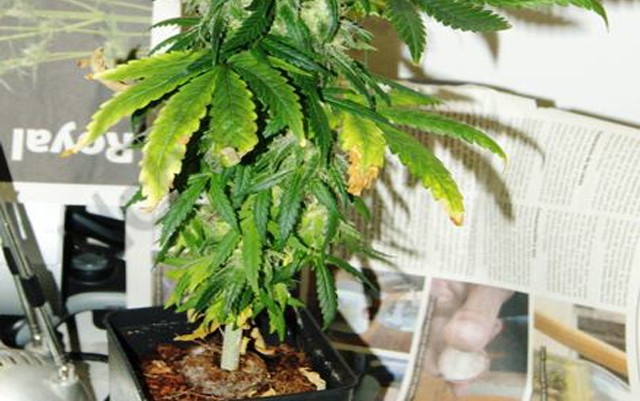Potassium: Spell it With a “K”
Potassium, in the form of potash, is perhaps the earliest known “manufactured” soil amendment other than manure. Introduced some time during the Stone Age and persisting to the present day in many parts of the world, the practice of slash and burn clears forest for agriculture and briefly enriches the scorched earth with a burst of nutrients from the ashes. Available potassium is rapidly depleted from the soil by crops, so subsistence farmers in underdeveloped countries must encroach new lands every few years. In developed countries, the soil is simply amended with organic or mined potassium. I’ll not wag my First World finger at Third Worlders for polluting the air, eroding the soil, and eradicating biodiversity in their quest for basic survival. Modern day Cannabis farming outlaws on the other hand; especially those fouling the Commons while stealing scarce water resources from our State or National Park lands, should be shamed and brought to justice.
Potassium (The “K” in N-P-K, from the Latin “Kalium”) is the third of the macronutrients and plays multiple roles in the well-being of your Cannabis, including stimulating early growth, promoting disease resistance, and improving the efficiency of water use. Strong cell walls produced under optimal Potassium levels serve to deflect pathogens, reducing the plant’s susceptibility to powdery mildew and similar infections. Turgid is the opposite of flaccid or wilted; think of turgidity as the hydraulic pressure of plant fluid. The presence of adequate potassium dissolved in the cellular fluids of plants is what makes for sturdy erect stems and perky leaves by helping to move water and nutrients between plant parts and by properly regulating the guard cells or stomata, sort of a Cannabis Viagra dose. There’s usually a huge amount of unavailable potassium in soils, trapped in minerals such as feldspar or mica. The planetary potassium cycle slowly transforms these minerals into available soluble forms which plant roots can access under proper conditions of pH, moisture levels, and total dissolved solids and back again. A little bit of clay in your soil helps roots with potassium uptake.
Like nitrogen and phosphorous, potassium is considered “mobile” in plants and can be scavenged from lower older leaves up to newer growth high in the canopy in times of scarcity. It is difficult at first glance to differentiate potassium deficiency in Cannabis from a lack of nitrogen or phosphorus, as in all three conditions there may be a yellowing and dying of the lower leaves which progresses upwards. The differentiator is that the condition begins at the leaf edge or margin, at its worst new leaves are reduced in size and flower buds fail to fatten.
Cannabis requires extra potassium during flowering, simultaneously with or just a few days after you’ve boosted the phosphorus and lowered the nitrogen to help the light deprivation cycle stimulate a transition from vegetative growth to flower bud formation.
High levels of sodium (Na) can lock-up potassium. Excess potassium can lock-up calcium (Ca) and magnesium (Mg) . Let’s review those “Cannabis industry standard” N-P-K ratios one last time for the most important life milestones:
- Clones / Seedlings 1-2-2
- Vegetative Growth 3-1-2
- Flowering 1-4-5
- Ripening 0-2-0
Dried banana peels (42% !!!), wood ash (10%), greensand (5%), fish scraps (4%), and chopped up corn stalks (1%) are all examples of common organic sources of readily available potassium.
Remember that 100 pound bag of granules with an N-P-K label certifying a guaranteed analysis of 8-8-8 from our chats about nitrogen and phosphorus? Whereas nitrogen as a salt or organic compound is “available ” to the plant, phosphorus and potassium are usually packaged in mined rock mineral form which must be broken down, usually by symbiotic mycorrhizal fungi, to become available to the plant. Since there are 8 pounds of one of the mineral forms of potassium (such as KCl, potassium chloride) in a 100 pound bag of 8-8-8 you can expect to find only around 6 pounds of available potassium in your 100 pound bag of 8-8-8. Other forms used to correct possibly accompanying micronutrient deficiencies include potassium sulfate, potassium nitrate, potassium-magnesium sulfate, and potassium silicate. Check the ingredients label to be certain.
Any advice and opinions about the cultivation of Cannabis offered by Bruce N. Goren are his own and do not represent the University of California or the Master Gardener Program.







How can I find out the exact numbers needed for N-P-K levels. I mean the ones needed like 7.0?